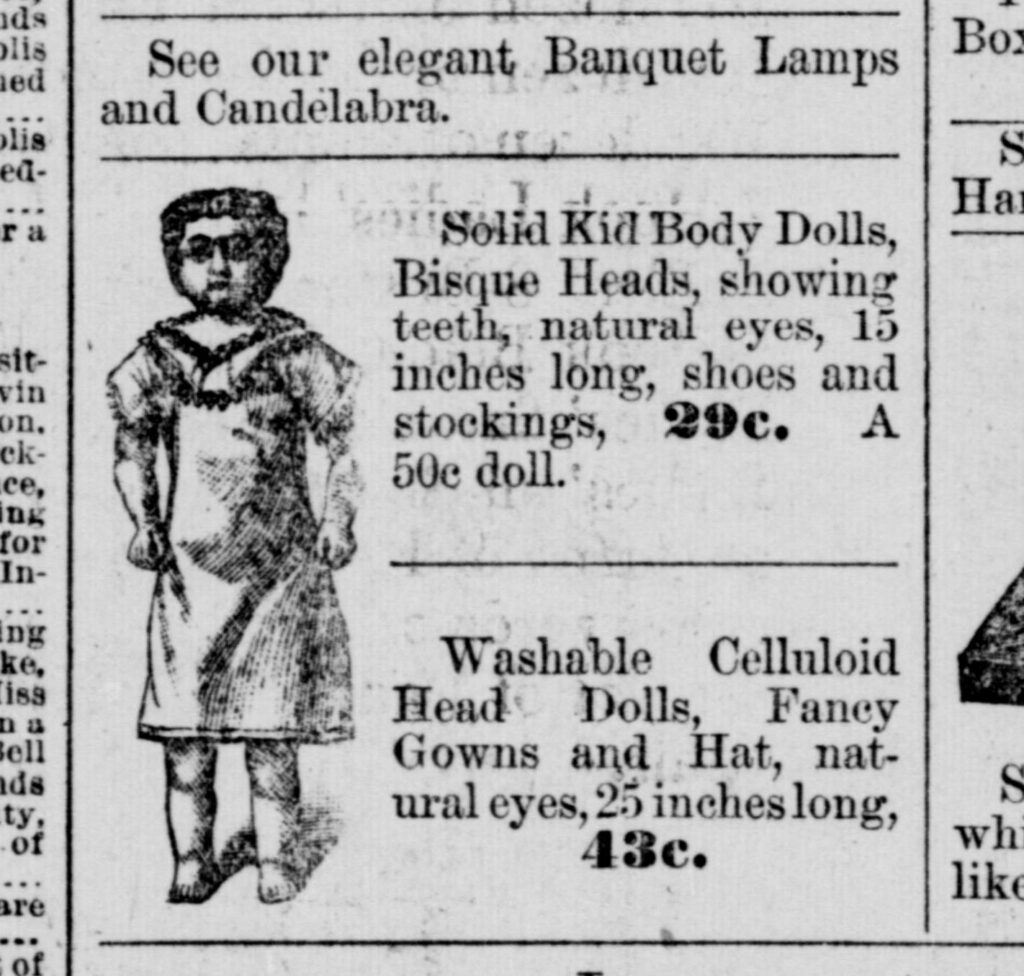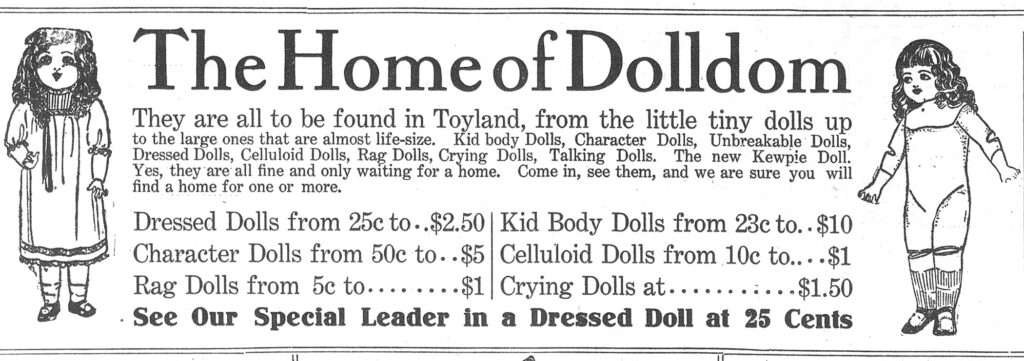Celluloid, Collodion, or Celluose
Celluloid came into existence in the late 1860s-1870s after the invention of collodion (guncotton) which people began using in the 1840s. The use of camphor provided the way through many experiments and trials for turning collodion into a solid mass. It was John Wesley Hyatt who experimented to combine the camphor with pyroxylin (partly nitrated cellulose) to create a new substance to which the Hyatts gave their trademark name Celluloid.
Therefore be careful not to confuse celluloid with collodion or cellulose. Each of these are different substances. Confusing celluloid with collodion or guncotton leads to misconceptions of its flammability. The danger of celluloid lay in the process of making it leading to many tragic factory fires. The final products made did not hold the danger.
John Hyatt Wesley
Discrepancies exist to the year John Wesley Hyatt invented celluloid. A sign outside of Albany claims Hyatt invented it in 1868. A newspaper article in 1940 wrote that an American, John Wesley Hyatt of Albany invented celluloid in 1877 inspired by an advertisement offering $10,000 for a substitute for ivory billiard balls he saw in 1868. (On May 16, 1871 John Hyatt received the patent, 114945, for a new and improved process of coating and beautifying the surfaces of billiard balls, knife-handles, and other articles.)
See Hyatt’s billiard ball here.
A newspaper article from 1878 claims that I. S. Hyatt and J. W. Hyatt discovered it in 1864 after Phelan & Collander of New York offered a $10,000 award for a substitute for the ivory for making of billiard balls. This article claimed he made a substitute similar to celluloid in 1868. This 1878 article explains that their celluloid discovery came in the spring of 1870, a substance made from the combination of cotton, nitric acid, and camphor. Nevertheless Hyatt received a patent (US 0050359 A) for his billiard ball October 10, 1875
In 1874 William Ford described celluloid as a material “produced by a chemical process from cellulose, one of the substances constituting the cellular tissue of plants, being the material which forms the walls or sides of the vegetable cells. Cellulose, united with gum camphor, by a peculiar process, forms the resultant, called celluloid;, which is a solid, hard and elastic, having a hardness ranging from horn to that ivory.” Celluloid did not oxidize in contact with metals and thus it easily began to replace the use of hard rubber.
Celluloid Manufacturing Company
John Wesley Hyatt, Jr. and his brother Isaiah Smith Hyatt of Albany received a patent dated July 12, 1870 (105,338) for the improvement in treating and molding pyroxyline. The patent describes it as an improved process of dissolving pyroxyline and of making solid collodion. They formed their Celluloid Manufacturing Company that fall with a capital of $60,000 and about $30,000 paid in.
They occupied a five story building on Mechanic St. in 1874. Officers listed in 1874 were Gen. Marshall Lefferts, President; I. S. Hyatt, Vice-President and Secretary; M. C. Lefferts, Treasurer; and J. W. Hyatt, Superintendent. That year they employed 50 workers and paid wages of $400 a week.
No one could make celluloid without a licensed permit from that company. At that time, only a factory in France had a license to manufacture celluloid in Europe. The factories used fine tissue paper and camphor treated with chemicals using a patented process to make the celluloid. (Burlington Weekly Press, 14 March 1879, page 1).
A German writer said the factory in France, near St. Denis, was founded by the inventor of celluloid (Association for the Promotion of Industrial Industry: Meeting reports of the Association for the Promotion of Industrial Industry. 4 February 1878. p 41).
Isaiah Hyatt gave the substance the name “celluloid.” The substance then began to replace the use of hard rubber.
In 1871 their company won a bronze medal in the mechanical department as announced by the New York Agricultural Society.
In 1872 they patented (133229) the process and apparatus for the improvement of manufacturing pyroxyline which they name themselves as the assignors of the Celluloid Manufacturing Company.
Over the years the company’s factories and those that manufactured goods using celluloid suffered various tragic and very costly fires and explosions (see example here.)
Other Hyatt Patents
On March 28, 1871 the Hyatts patented an improvement in dental plates along with Jesse A. Perkins. This led to the first mention of “celluloid” in the US patent offices appears in 1871 for celluloid dentures for Thomas Alder Dickson Forster (US 0120509 A).
One of the patents (US 0128729 A) related to an improvement in the apparatus for enameling checkers dated July 9, 1872 which John shared with other family members named as I. Smith Hyatt and Charles M. Hyatt. They patented their celluoid combs in 1873. The imitation ivory was patented in 1874 along with their brushes. Slate frames came in 1875.
Some of the patents were for machines for cutting combs, making boxes, putting spots on dominoes, improving grinding wheels, a hydraulic press, and making sheets of celluloid and so many more.
One great invention were roller bearings used in the auto industry. His celluloid film helped turn photography into films.
The Perkin Gold Medal
In 1914 the Society of Chemical Industry presented John Hyatt with the Perkin gold medal for chemical discovery and for recognition of 50 years of research work in chemistry. At the time of the award, he had 238 registered patents. He was the 7th American to receive the award first provided by Sir William Henry Perkin, an English chemist.

Rheinische Gummi- und Celluloid-Fabrik
A factory in Mannheim, Germany was already producing celluloid in 1878 despite the claim in the American newspaper that only France produced it. A German factory in Mannheim “Rheinische Gummi- und Celluloid-Fabrik” had advertisements appearing in 1890 in German medical publications. The factory had a patent in 1889 for a process for the production of hollow spheres from celluloid. They appeared in the 1887 edition of Leuchs’ Address Book of the Export Businesses from the German Empire, Austria-Hungary and Switzerland. Their doll heads usually have a turtle trademark.
1889 Case for the Trademarked Word
In 1889 the word CELLULOID was confirmed as a trademark word owned by the Celluloid Manufacturing Company and no one, not even the Webster’s dictionary, could use it without permission of the company. Justice Bradley of the United States Circuit Courts of New Jersey made the decision in a lawsuit case with the Cellonite Manufacturing Company of Wilmington, Delaware (Pittsburg Dispatch. December 25, 1889, Page 6). Evidently people were deceived about their purchases of cellonite dentures.
Interestingly, William Ford mentioned that the word Celluloid was a patented trademark back in 1874.
Lefferts Patented Dolls
The Marshall C. Lefferts of the Celluloid Manufacturing Company received a patent (US 0237559 A) February 8, 1881 for the improvement in making celluloid dolls either in whole or in part. The patent was partnered with William B. Carpenter who received a patent earlier in 1880 (Dec 28) for coloring the eyebrows of celluloid dolls (US 0235933 A). The Lefferts patented doll is the first diagramed among other examples of celluloid dolls in Clara Fawcett’s 1947 book, “Dolls – a Guide for Collectors.”

Multiple Uses
Manufacturers produced jewelry, combs and brushes, hand mirrors, imitation ivory, billiard balls; handles for umbrellas, canes, whips, harnesses and even utensils; cutlery, chess pieces, pencil cases, and even dentures! The ability of the manufacturers to use celluloid to imitate other substances extended their abilities to create many varied items. The uses extended to manufacturing pencil boxes, cigar boxes, frames for spectacles and opera glasses, shoe tips, thimbles, photographs (as compared to ivory types) shirt cuffs, collars, and neckties as imitation linen, and even doll heads.
Though the mention of making doll heads appears as early as 1879, the larger production of celluloid doll heads appear on the market at the turn of the century in the 1900s .

Early Celluloid Doll Manufacturers
Karl Standfuss or Deuben, Dresden Germany produced celluoid dolls and doll heads as mentioned in a 1914 edition of Velhagen & Klasings Monatshefte. This is one of the German companies that also manufactured bisque Kewpies.
